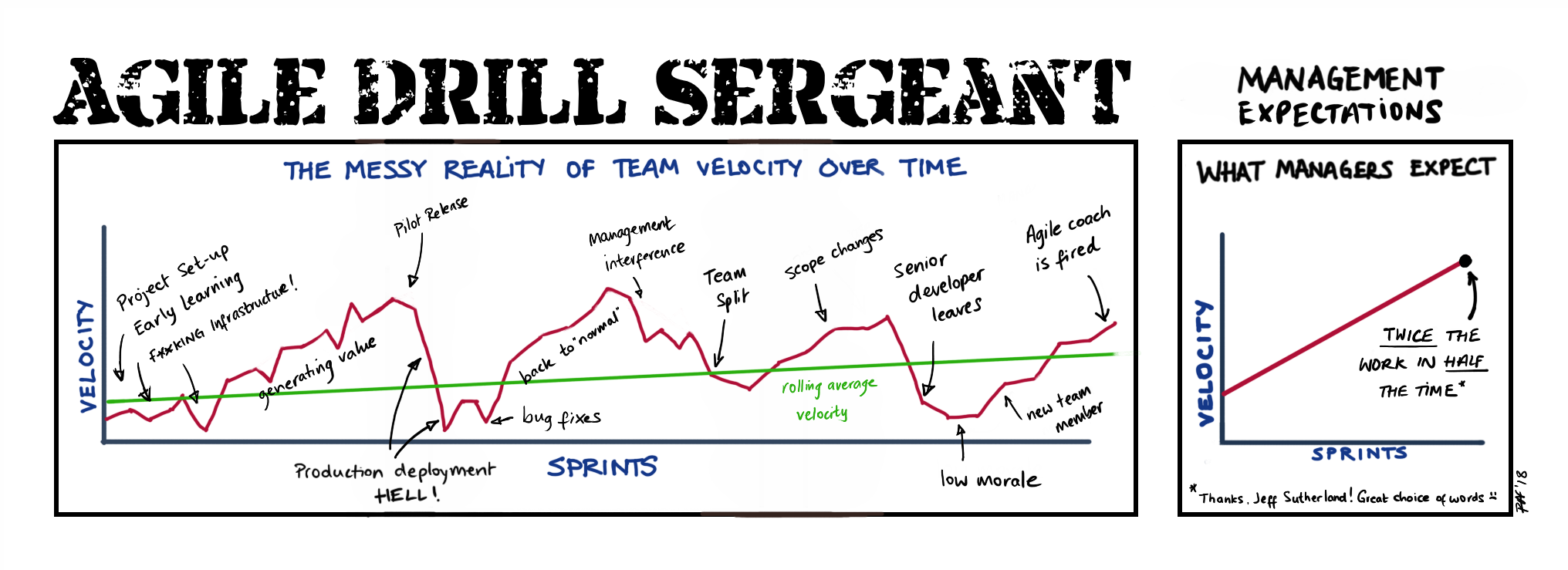Management Expectations
As someone once wrote, twice the value in half the time – or twice the effectiveness – would have been a more agile formulation. Twice the work in half in the time sounds like pure Taylorism!
So a friend and colleague of mine once got “fired” from a customer because as Scrum Master he hadn’t managed to increase velocity. In fact he was pretty much held responsible for the fact that the project was delayed and hadn’t fulfilled the stakeholders unrealistic expectations. We were all shocked. How could anyone have such a poor understanding of agile?
Well it turns out that it’s quite easy to generate this degree of misunderstanding. It invariably comes from layers of management and lack of communication. Basically you have an island of agility in a traditional hierarchical company. Management has been sold the idea that agile is faster than traditional development processes and have set their expectations accordingly. However, if the middle managers between the teams and upper management aren’t open about the process and the progress then a gulf opens up between expectations and reality. My friend fell into that gulf. Although he had regularly communicated and documented his concerns, they had not been communicated to the top. When management lost face because the team didn’t deliver on time, someone’s head had to roll – who better than the external Scrum Master who hadn’t increased velocity over time?
Afterwards, internally we had a retro about what had happened. Although it had been a very painful experience for my friend, we soon saw that we had actually learned a lot about the pitfalls of leading an agile team(s) in a classical company. This changed our attitudes towards what customers we wanted to work with and our expectations of their involvement in the change.
